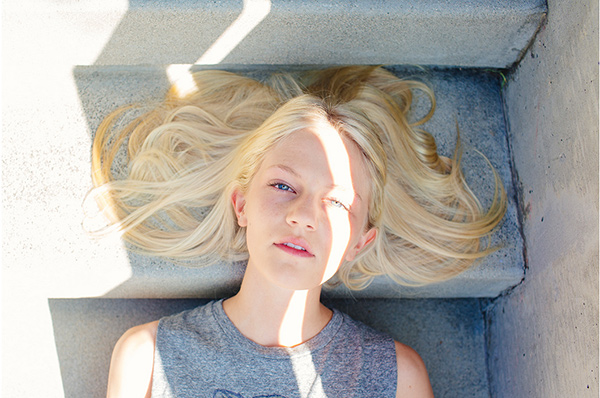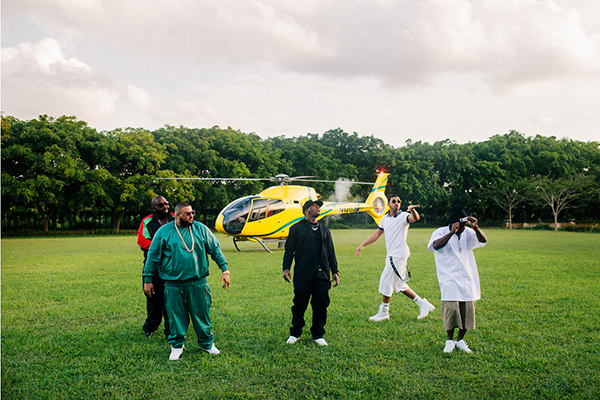Share
Want to Land More Gigs? These Portfolio Tips May Do the Trick
Kendrick Brinson and David Walter Banks, based in L.A., are commercial photographers. They are also happily married. Though they maintain separate ...

Kendrick Brinson and David Walter Banks, based in L.A., are commercial photographers. They are also happily married. Though they maintain separate websites for their personal and editorial work, as a team they manage Brinson Banks—their joint portfolio and company website.
With clients including Tiffany & Co., Vitamin Water, TIME, The New York Times Magazine, GQ, The FADER, Mother Jones, Forbes and others, Kendrick and David have a lot to share about what it takes to tailor portfolios, what types of images to share when, and how to prepare for an in-person meeting with portfolio in hand.
How does an online portfolio showcase the photographer’s brand while helping him land the jobs he wants?
Kendrick: An online portfolio is a photographer’s chance to show off his or her style. It’s his chance to showcase his favorite images from a shoot, which are often different from the buyer or client, who has different taste.
It’s also a photographer’s chance to show the client what he wants to do. You might be shooting nothing but headshots in the beginning, but if you want to shoot fashion, you should show fashion on your site. Your client can’t read your mind.
David: It all comes down to knowing your brand. Know what you’re selling, why you are selling it, and why you’re more desirable to a client than the next artist in line. We all have a range of photographs, shooting styles and types of images, but they’re not all going to be relevant to your key audience.
Everything should be put through the filter of your brand identity. If you want to shoot edgy youth culture, you should not include photos of seniors laughing on the beach. But if you want to target drug companies, then your seniors laughing on the beach may be just perfect.
What are the most important questions to ask yourself as you’re putting together a portfolio?
Kendrick: First: Is this the type of work I want to keep shooting in the future? Second: Do these photos best represent my strengths? And third: Am I putting these photos in my portfolio because they’re what I think the client wants to see or because they’re what I shoot best and what I want to shoot in the future?
David: We’re lucky as photographers because there’s almost always a good story every three photos or so. Our jobs are interesting. (That’s why we’re all so lucky to do what we do!)
It doesn’t hurt to have a story or two to show off how you handle yourself on a shoot or how you saved the day or even just to make the client laugh. We’ve found that editorial clients are more interested in chatting, and commercial reps and art buyers are more interested in flipping through the images. We wouldn’t pick photos based on the story though. Always show your best work.
Kendrick: With everything on your website (and your in-person meetings, really) assume that the person reviewing is very busy and won’t be spending much time on your site. You should assume they have one minute to look at your work, and if you don’t wow them with the first five photos, they’ll close the window and move on. That means they might only click on one gallery (or have time to flip through your book really quickly), so make sure they can find your work right away and don’t have to guess what a category means. Save the artsy, poetic stuff for fine art and book projects.
How do you decide whether or not to show your personal projects?
David: That’s a tough question, and we have been advised toward each end of the spectrum. Again, this really depends on what your brand is and what you want clients taking away from your portfolio.
If your personal projects look exactly like your client work, then it’s a no-brainer that you should show them. If they deviate greatly, then you have a tougher decision on your hands. We normally choose to include personal work in our portfolios. We feel that it shows clients another aspect of our work, provides a bit more depth, and gives them another level on which to connect with us and our photography.
Showing personal projects also indicates to a client that as a photographer you’re inspired, constantly pushing yourself, and consequently continually growing and evolving. It’s this last piece that might be the most important, as no one wants to work with a shooter who has grown stale and stagnant.
Can you talk a little bit about your workflow (preparing portfolios for each client you meet with, etc.)?
David: This is one of those situations when you simply have to be flexible and willing to adapt. Personally, we choose to bring two portfolios to every meeting. One of client work that is similar to what we would be hired to shoot, and one for personal projects. While the personal projects remain somewhat consistent, the client work is based on the meetings we have. We show editorial clients different work than advertising clients because they are looking for different things.
We normally line up a week of meetings based on one or the other, but bring a spare set of images in case something else comes up. If the meeting is going to be over drinks instead of in the office, it’s sometimes easier to bring an iPad instead of print books. The iPad is always great for making last-minute switches if we get new information about a client or have booked a meeting last-minute and need to tailor a custom portfolio.
Another important piece to remember is that you are a walking, breathing version of your brand. You have to not only think about the content of your book, but how it is put together and—just as important—how you yourself are put together and what you have to say.
How much research do you do on a potential client before you meet and pitch?
David:We do everything we can to research our clients before a meeting. We find out what campaigns they have worked on, what awards they’ve won or, at very least, what type of work their company does and what they’ve recently worked on. There are a number of online resources that allow you to search specific campaigns. At the very least, Google can be your friend. If you’re walking into someone’s office, it’s vital to know what he needs so that you can tell him exactly why you’re the person to meet those needs.
Want more tips to develop and showcase your brand? Download our guide 10 Branding Secrets for Photographers today!







